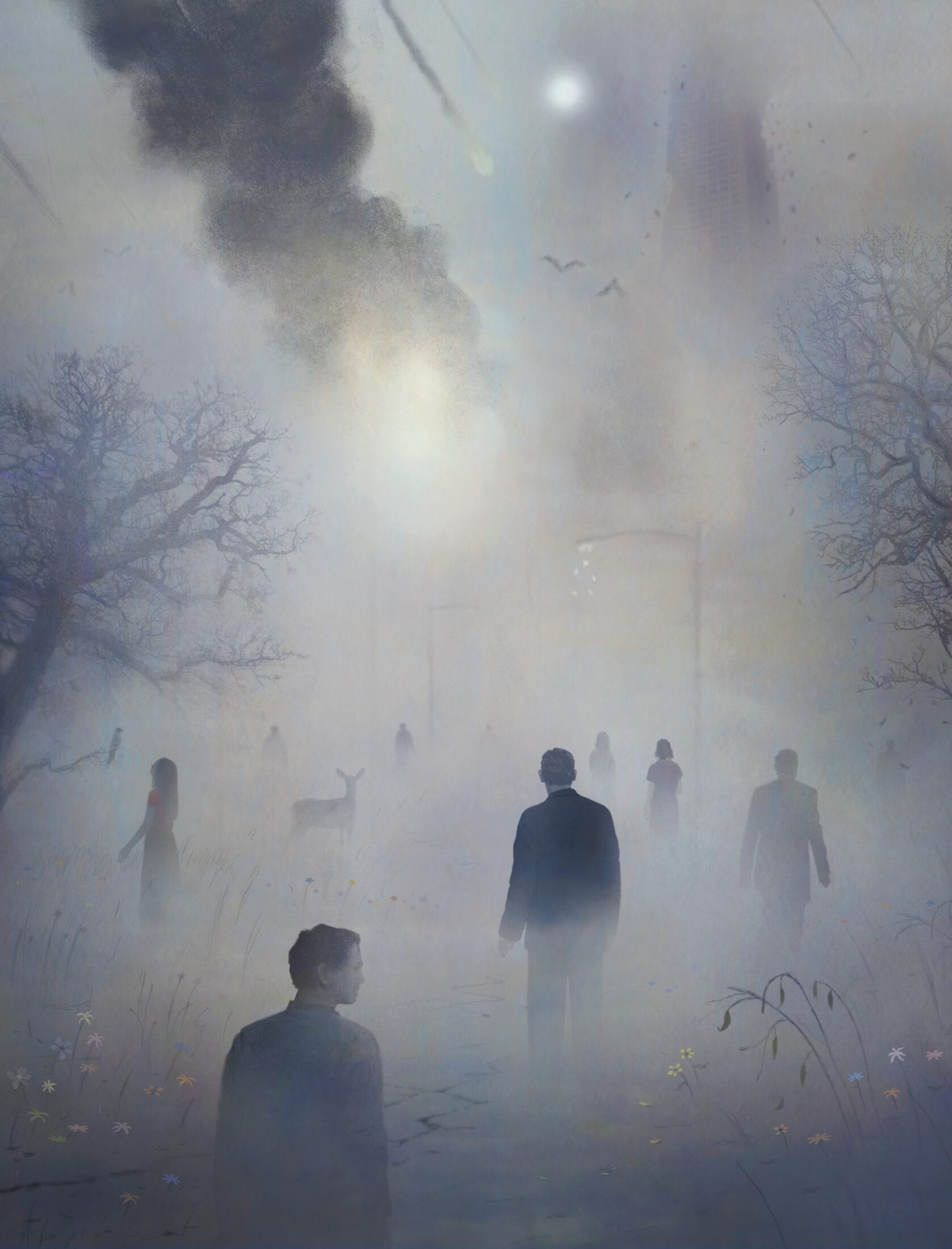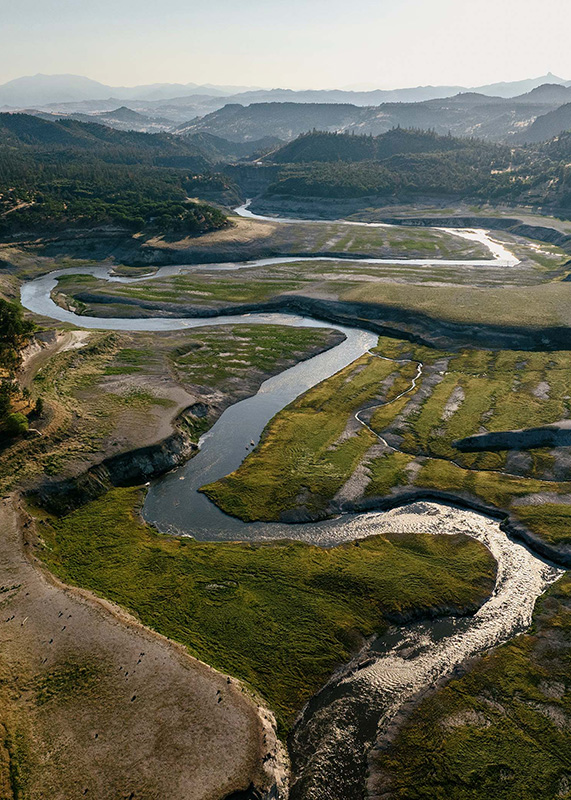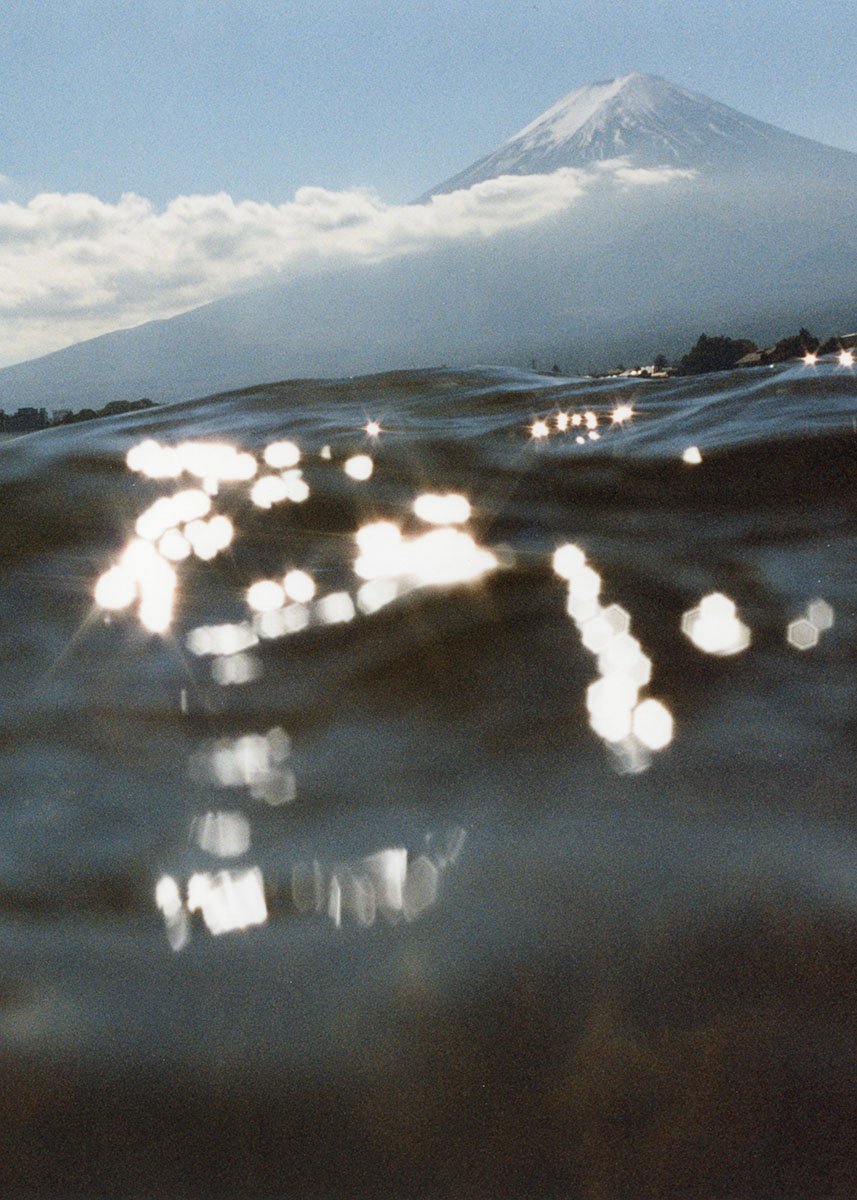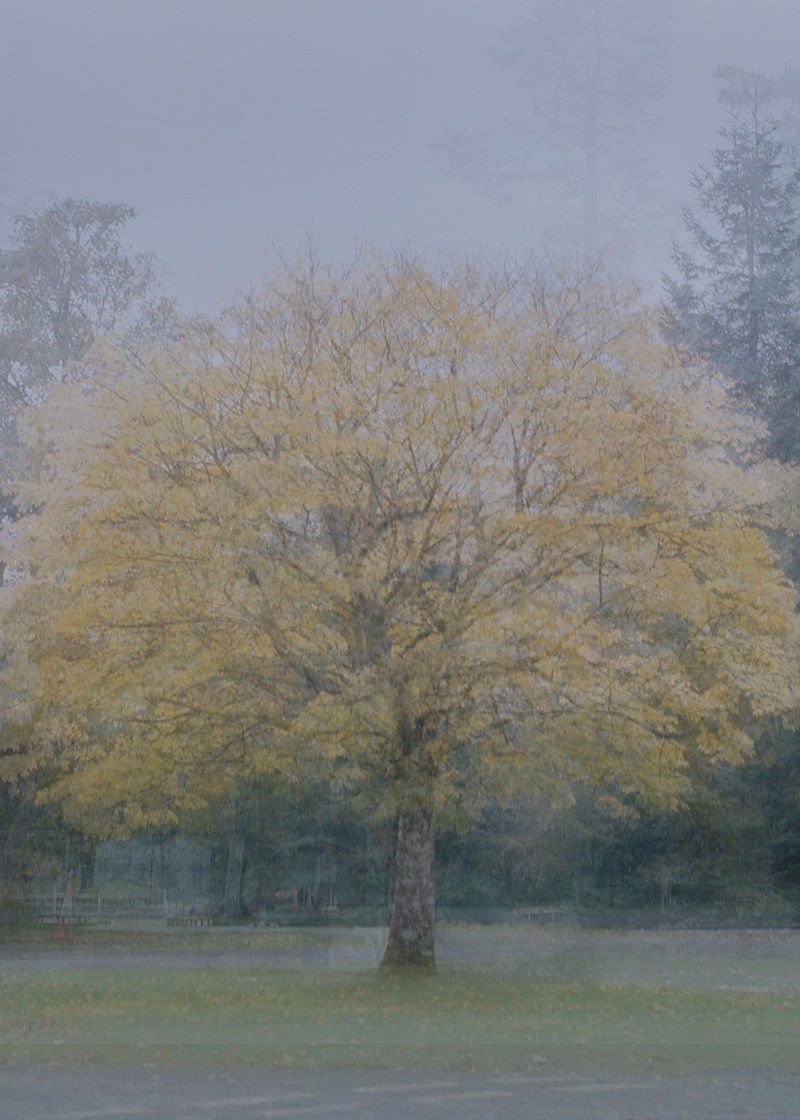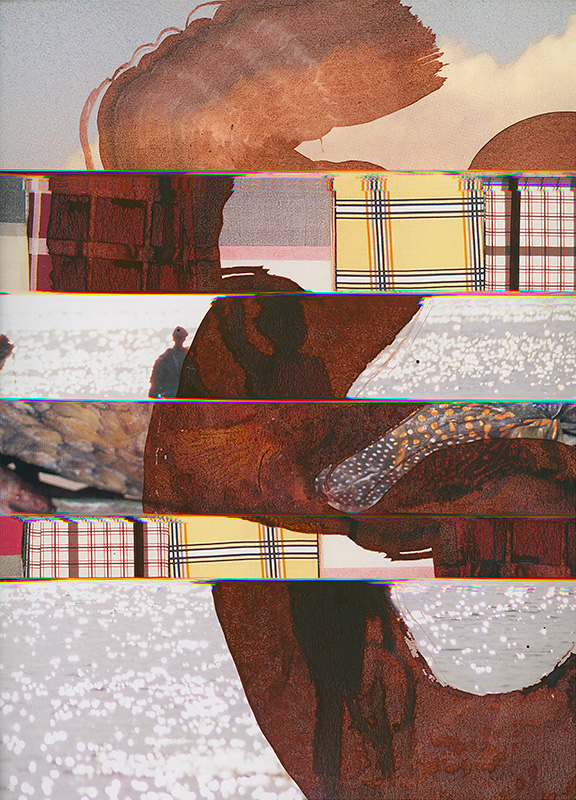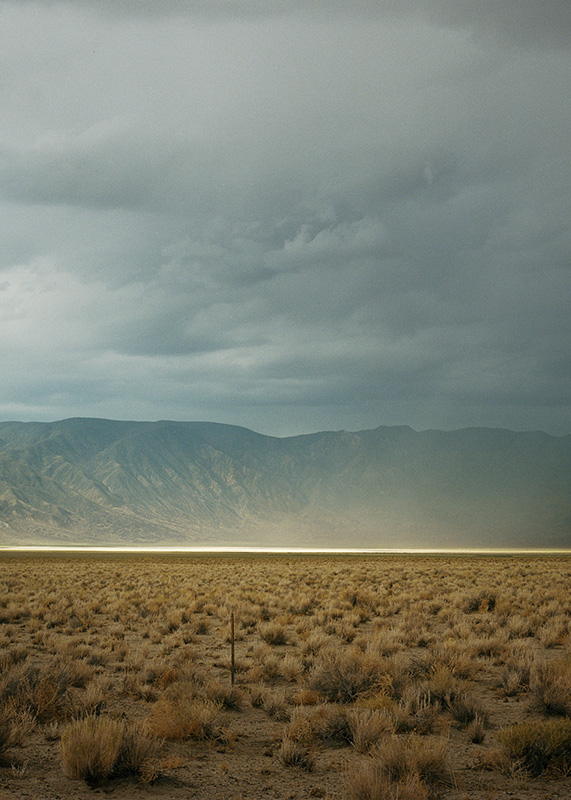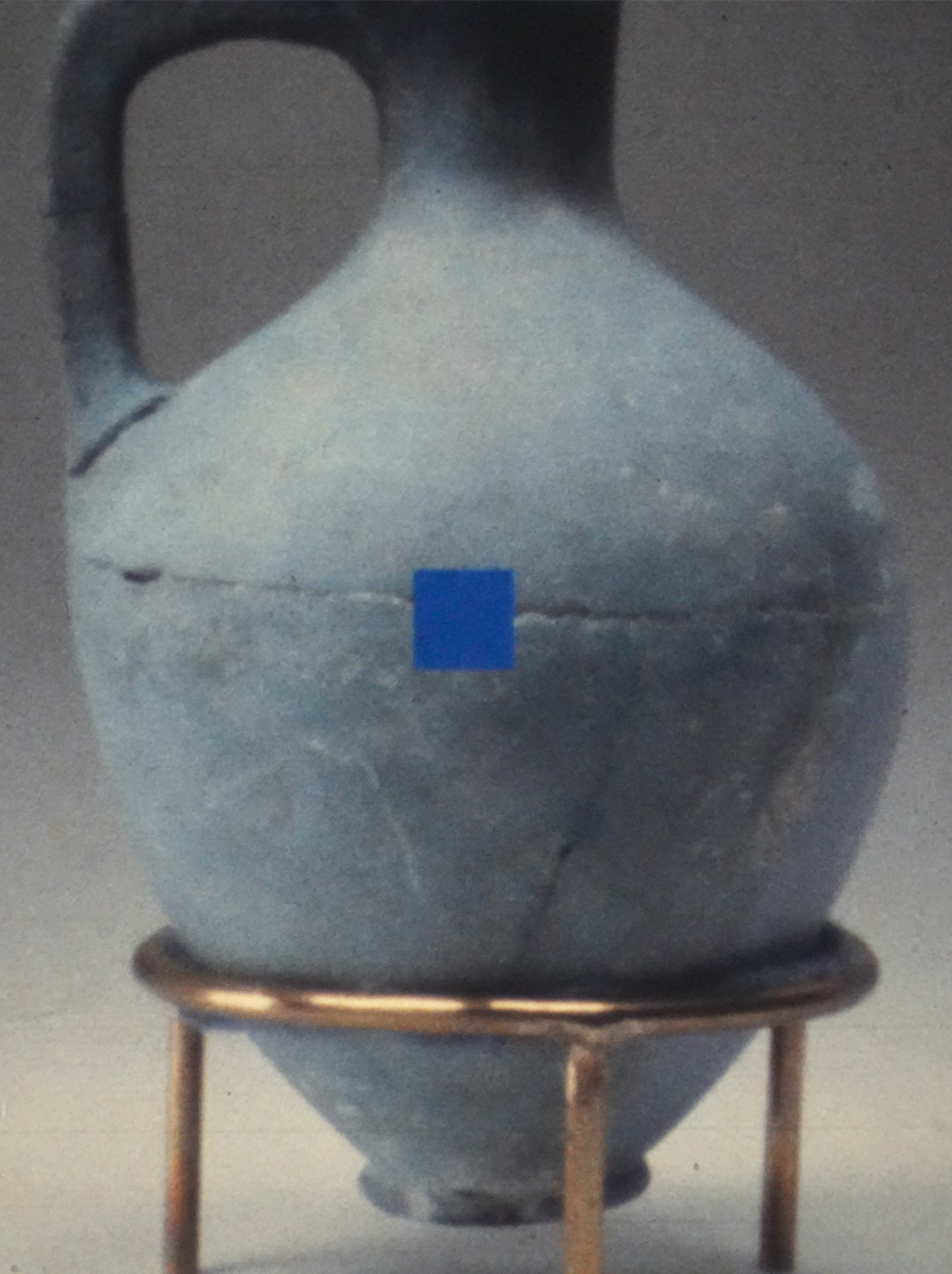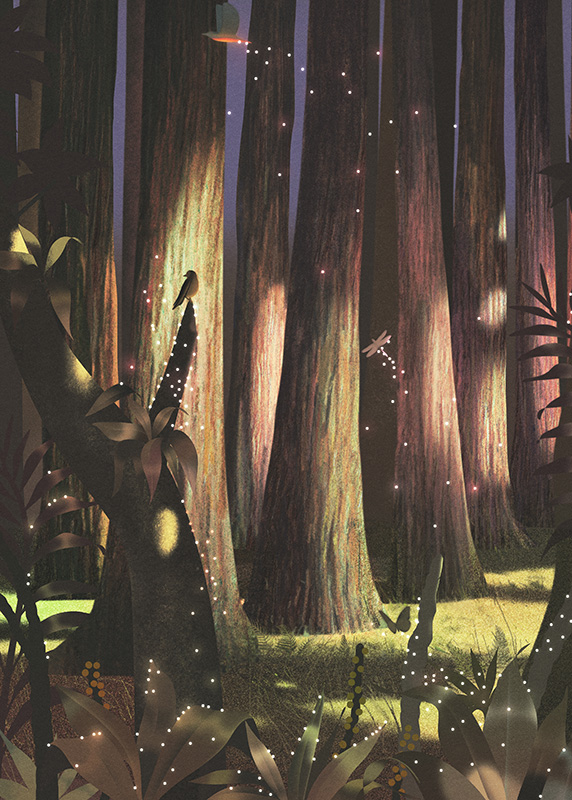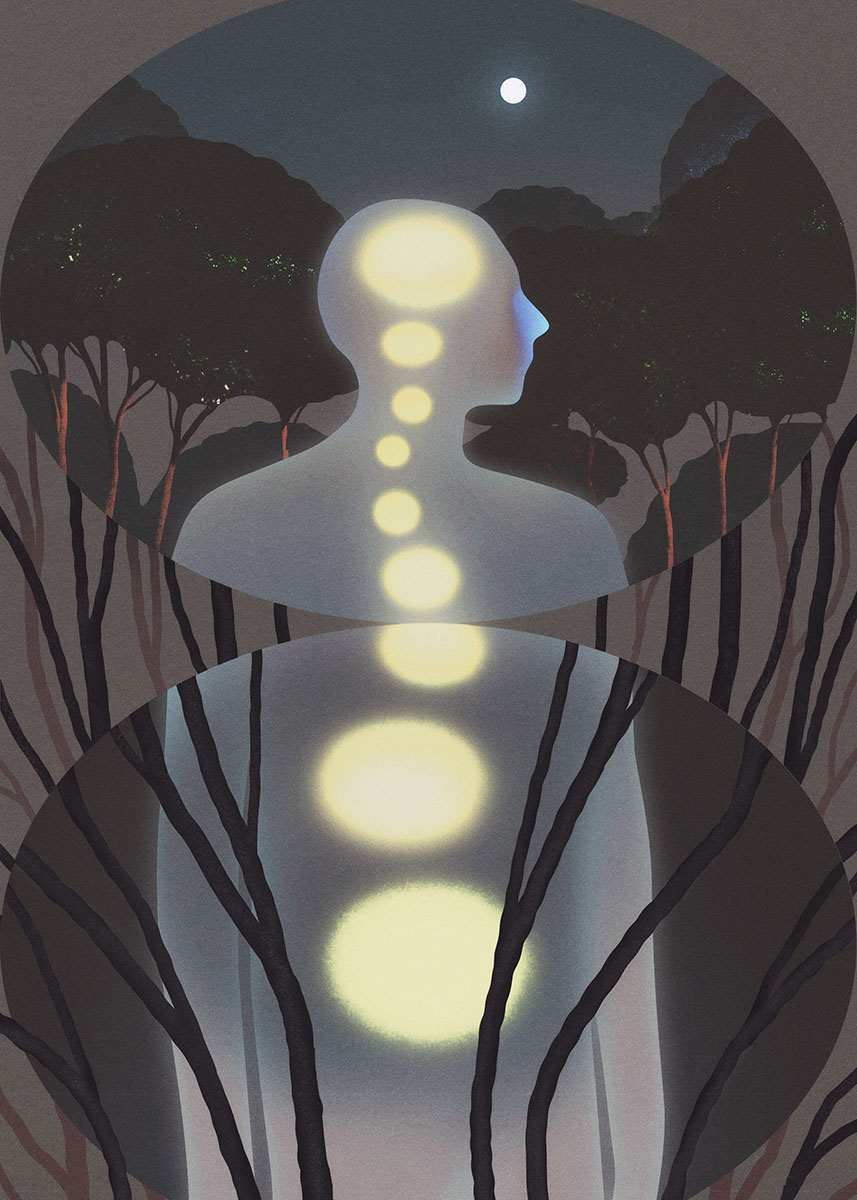
Roy Scranton is the author of Total Mobilization: World War II and American Literature; We’re Doomed. Now What?; Learning to Die in the Anthropocene: Reflections on the End of a Civilization; and most recently, Impasse: Climate Change and the Limits of Progress. He has written for The New York Times, Rolling Stone, The Nation, The New Republic, Yale Review, Boston Review, among others; and co-edited What Future: The Year’s Best Ideas to Reclaim, Reanimate & Reinvent Our Future and Fire and Forget: Short Stories from the Long War. His recognitions include the Whiting Fellowship in the Humanities, a Lannan Literary Fellowship for Fiction, and a Guggenheim Fellowship. Roy is an associate professor of English at the University of Notre Dame, where he teaches creative writing and environmental humanities, and serves as director of the Notre Dame Environmental Humanities Initiative.
Dadu Shin is an artist living and working in Brooklyn, New York. He graduated from the Rhode Island School of Design in 2010. His work has appeared in The New York Times, The New Yorker, The Boston Globe, and Nautilus.
In this essay, Roy Scranton asks what we mean when we say “the world is ending.” Examining the nature of the narratives we tell ourselves about the future, he explores what revelation may be before us.
We do not know the future. We do not know when the next storm will make landfall. We do not know when the next pandemic will erupt. We do not know when the next drought will strike. We do not know how much the planet will warm in our lifetimes. We do not know whether we can renovate global economic, political, and energy infrastructure swiftly enough to prevent catastrophe. We do not know whether our civilization will survive the next century. We do not know how many will die.
In the fall of 1965, as beeches and gingkos began turning all across the campus of Bryn Mawr College, British literary critic and English professor Frank Kermode gave a series of talks about the future. His topic was “The Long Perspectives,” and his main concern, broadly framed, was the fictional structures we impose on time and experience in order to make them bearable. Kermode was interested in how we relate an individual human life, with its beginning, middle, and end, to grander narratives (historical or cosmological in character) about the fate of the world, and he was skeptical though not unsympathetic toward the all-too-human desire to see some kind of concordance between the two—the desire, that is, to believe that time has a shape like life, and that we happen to occupy a privileged place within it: the beginning, perhaps, or the end. The times being what they were—just a few years after the US and the USSR almost started a nuclear war over Cuba, and a mere twenty years after a global cataclysm which killed between seventy and eighty-five million people—Kermode began with the end: the “ways in which, under varying existential pressures, we have imagined the ends of the world.”
Kermode published his talks as a book, The Sense of an Ending: Studies in the Theory of Fiction, which was received with “almost unanimous acclaim” when it appeared in 1967 and quickly became a modern classic of literary criticism. It is a sophisticated work, replete with insight, and intimidatingly learned, written with both donnish authority and earthy wit, ranging in reference from medieval apocalyptists to French avant-garde novelists, with an abiding concern, throughout, for the poetry of Wallace Stevens. It is also one of the last great books of literary criticism produced before the discipline was taken over by “theory,” and although it introduces its own special concepts and terms (“in the middest,” for instance, and the temporal distinction between chronos, kairos, and aevum), it is written without reliance on post-structuralist jargon. Nothing is “imbricated” or “deconstructed,” and there is no discussion of how “subject positions” are “interpellated” by the “Symbolic” within “hegemonic discourses.” It is nevertheless not an especially easy book to make sense of, despite being beautifully written, and its focus is limited primarily to French, British, Irish, and American literature (and almost exclusively white, male authors), but if one is at least passingly familiar with those canons, The Sense of an Ending remains a pleasurable, illuminating, and provocative read. It’s also strikingly relevant, today, as we struggle with our own sense of an ending.
We do not know the future. We do not know when the West Antarctic Ice Sheet will collapse. We do not know when the global economy will collapse. We do not know when our cities will collapse. We do not know how quickly seas will rise. We do not know how to respond to global transformations in the hydrosphere, cryosphere, atmosphere, and biosphere. We do not know how to act rationally as a species.
Kermode’s main argument stems from the fact that we live in the middle of things, or, as he puts it, “in the middest.” We stumble into life well after the party started, and are forced to leave long before it ends. Our view of time—history—the cosmos—existence as such—is necessarily limited, partial, contingent on circumstance, and to some degree arbitrary. Fundamentally, all is transience: you and I and America and capitalism and the human species and the Anthropocene are all passing phenomena in the seething flux of energy and matter that is the universe. Existence has no shape but change, and history is one damned thing after another.
“Nature” has no inherent meaning, yet paradoxically “nature” made humans conscious, social animals who find such groundlessness infuriating, nearly incomprehensible, and all but impossible to live with in a day-to-day way, since our daily activities, our sense of being in the world, and our sense of the world itself are motivated and made meaningful not merely by unconscious reaction and instinct, but by individually imagined and collectively produced symbolic structures, which is to say beliefs and stories—in Kermode’s word, “fictions.” As inevitably as the sun “rises” in the east and “sets” in the west, human consciousness weaves sensory data, feelings, and desire into a composite spatial, temporal, and social world, turning noise into information by organizing it into structures of knowledge and meaning: Beloved, Chartres Cathedral, the periodic table, family, geometry, Billie Eilish singing “Bury a Friend.” Making culture is not unique to Homo sapiens, but it is something for which human beings have exceptional talents. Evidence suggests that we’ve communicated and made tools as long as we’ve existed, having inherited these capabilities from our hominid ancestors, and researchers have observed cultural differentiation in chimpanzees, bonobos, orangutans, and dolphins, but the evolution of abstract thought and syntactical language more than seventy thousand years ago triggered significant advances in our ability to create collective systems of meaning and memory.1
The problem, as Kermode saw it in 1965—the memory of World War II sharp in his mind, the Cold War in full swing, nuclear annihilation looming, the first US combat troops deploying to Vietnam, Watts on fire, and civil rights activists marching from Selma to Montgomery in the face of violent resistance from Southern racists—was that our fictions do not always match reality, and are sometimes woefully erroneous. This is why he begins his book with “the End,” taking a close look at various attempts to imagine and predict apocalypse, mostly within a Christian framework, and exploring how such fictions persist despite being repeatedly falsified. As he writes:
Apocalypse depends on a concord of imaginatively recorded past and imaginatively predicted future, achieved on behalf of us, who remain ‘in the middest.’… Apocalypse can be disconfirmed without being discredited. This is part of its extraordinary resilience. It can also absorb changing interests, rival apocalypses…. It is patient of change and of historiographical sophistications. It allows itself to be diffused, blended with other varieties of fiction—tragedy, for example, myths of Empire and Decadence—and yet it can survive in very naïve forms. Probably the most sophisticated of us is capable at times of naïve reactions to the End.
The enduring appeal of apocalypse was not, for Kermode, a problem for medieval mystics alone. As he remarks, “of course we have it now, the sense of an ending. It has not diminished, and is as endemic to what we call modernism as apocalyptic utopianism is to political revolution…. We have our Terrors and specific images of them, though … these do not distinguish us essentially from other apocalyptists.” For Kermode, apocalyptic thought is neither specifically medieval nor specifically modern, but foundational to the Western, Judeo-Christian conception of rectilinear time. As he puts it, “The apocalyptic types—empire, decadence and renovation, progress and catastrophe—are fed by history and underlie our ways of making sense of the world.”
Our fictions do not always match reality, and are sometimes woefully erroneous.
The persistent appeal of false apocalypse is a problem—epistemologically, hermeneutically, and existentially. The narratives we develop to organize human social life cannot be divided simply into true and false based on their correspondence to physical reality, not least because the schema through which we define physical reality are themselves socially constructed, but perhaps most importantly because much of what we take to be true has only an accidental relation to the world beyond language. Why is an apple an apple and not a pomme or tafaha or píngguǒ or bloork? What is money? Blue? Race? Time? How do you prove it? These ponderous questions are of special concern to a literary critic such as Kermode, whose raison d’être is the study of manifestly false narratives. As Kermode frames the problem, “How can apocalypse or tragedy make sense, or more sense than any arbitrary nonsense can be made to make sense? If King Lear is an image of the promised end, so is Buchenwald; and both stand under the accusation of being horrible, rootless fantasies, the one no more true or more false than the other, so that the best you can say is that King Lear does less harm.”
Kermode cannot find his way out of this quandary. He fails to offer any persuasive criteria for determining how to decide between competing fictions, nor does he make a strong case for the value of self-consciously fictional fictions. His attempt to distinguish between anti-Semitism and King Lear as fictions, for instance, flounders on two specious distinctions, the first between “fictions that inescapably involve an encounter with oneself” and “fictions of escape,” and the second between “self-conscious fictions” and “unself-conscious myths.” These distinctions seem sensible until you start asking questions about how we might categorize our fictions. Is reading King Lear in 2020 an “encounter with oneself” or “escapist”? How about Mein Kampf, Karl Ove Knausgaard’s six-volume My Struggle, or Margaret Atwood’s The Handmaid’s Tale? And as far as self-consciousness goes, we might compare postmodern reactionaries such as Milo Yiannopoulos, Steve Bannon, and Gavin McInnes with die-hard cosplayers, MCU stans, and the Beyhive. Which are the ironists engaged in constructing self-conscious fictions, and which are the true believers building unself-conscious myths?2 And which are the less harmful?
Fundamentally, there is no essential division between social fictions and genuine facts, since facts themselves are socially constructed, as historian Naomi Oreskes emphasizes in her recent book, Why Trust Science? Thus the question of how to choose between different social “fictions” can only be answered by an appeal to judgment, which means making decisions based on prior knowledge, experience, and discussion. This is why, as Oreskes argues, we can trust science: because a community of experienced scientific experts with deep knowledge of their subjects work hard to discuss, verify, and vet each other’s claims. Kermode is concerned less with saving science from relativism than he is with saving literature from meaninglessness, but in the end even he admits defeat, arguing finally not for making simple distinctions between “myths” and “fictions” but for approaching existence with skepticism, a sense of complexity, and a hopeful if tenuous faith in human solidarity. He writes:
We give ourselves meaning by inventing critical time, like the shadow of the gable. Fictions in the end fail under the pressure of what James is said, in his last words, to have called “at last, the real distinguished thing”; but meanwhile we have our predictive games, our family jokes like Lear, our anthropomorphic paradigms of apocalypse; we have a common project, truth in poverty, and a common need, solidarity of plight in diversity of state. The free imagination makes endless plots on reality, attempts to make our proportionals convenient for our equations in everything; our common sense makes us see that without paradox and contradiction our parables will be too simple for a complex poverty, too consolatory to console. Our study … must have a certain complexity and a sense of failure. “I cannot do it; yet I’ll hammer it out.”
This is an appealing formulation, restrained in its earnest desire for concord, generous in its humanity, and demonstrating a courageous tenacity. Yet there is something in it, and indeed in Kermode’s whole approach, that strikes false, or if not false then at least hollow. Approaching the “fictions” by which we make the world comprehensible with skepticism and sophistication seems prudent, up to a point. But it also seems that such skepticism and sophistication can easily turn into another kind of escape, another kind of dodge, a fiction of disinterested contemplation focused on the endlessly fascinating games we play with language at the expense of attending to the reality those games evolved to cope with.
For instance: Are we living in the Anthropocene or the Cthulhucene, the Plantationocene or the Capitalocene? Should we call it climate change or global warming? Does our framing need to be more hopeful? Are we telling the right story?
When faced with intractable problems, it’s a relief to argue questions of form. Thinking back to the tumultuous violence of the late 1960s, it’s not hard to see how Kermode’s turn away from the apocalyptic challenges of war, nuclear Armageddon, decolonization, racial strife, and the future of mass technological society in favor of sophisticated meditations on the fictionality of apocalyptic narratives so dense and labyrinthine they verge on sophistry must have been comforting to his readers. Indeed, The Sense of an Ending opens with a disavowal of any responsibility for solving earthly problems: “It is not expected of critics as it is of poets that they should help us make sense of our lives; they are bound only to attempt the lesser feat of making sense of the ways we try to make sense of our lives.” Yet this disavowal is disingenuous. Kermode later writes, “The critics should know their duty,” and defines that duty as “the justification of ideas of order,” by which he means the critical analysis and evaluation of “the ways we try to make sense of our lives.”
Thus Kermode, in his delicate intellectual dance, tries to balance contrary positions: On the one hand, the critic is not responsible for solving the world’s problems. On the other, it is the critic’s express duty to analyze, explicate, evaluate, and judge the various fictions proposed by others for making reality sensible and bearable. An enviable position, so high above the fray! Never risking the embarrassment of a “naïve reaction,” never risking being taken in by an erroneous fiction because never making the commitment to any specific future. Because that, of course, is the rub: if we must live by fiction, and we must, then we must also choose which fictions to impose on reality—preferably ones that reflect or model that reality in important respects.
And so we come back to the end of the world.
We do not know the future. We do not know how quickly the global climate system will change. We do not know how chaotic that change will be. We do not know what kind of planet we’ll be living on in thirty years. We do not know how long the earth can sustain more than eight billion humans. We do not know when we will go extinct, or how many other species we’ll send before us into oblivion. We do not know who we are. We do not know what we will become. We do not know how our grandchildren will survive.
“The world is ending.”
This proposition is a fiction, at least in Kermode’s sense, in that it’s a judgment in the form of a predictive narrative, constructed with symbols and synthesized from experience, emotion, sense data, and information derived from external sources. It expresses, as Kermode might point out, a concordance between the speaker’s transient being in the present and their sense of participating in a larger pattern of existence, in this case “the world,” a term which is admittedly somewhat vague. One has an intuitive sense of what one means when one invokes “the world,” which is something like the subjective imagination of the sum total of contemporary human existence, overlapping with any number of historical, geological, and religious narratives about the past, and also likely stamped with the image of the planet itself, the “pale blue dot” we all know so well from pictures, the globe whirling on its brass spindle.3
My “world” will inevitably differ from yours, both of ours from Angela Merkel’s, and Merkel’s from that of Abdullah Yusuf, a 27-year-old Bangladeshi lab tech who described to a reporter from Al Jazeera his fears about catching COVID-19 on public transit. Nevertheless, despite what are likely significant differences between each person’s sense of their “world,” the word “world” points to something shared by every human being, a mutually constructed and concurrent co-existence happening within recognizable spatial and temporal bounds. No one says “the world” to mean Mars or the Incan Empire. One might say “the world” to mean specifically the planet Earth, but this would be idiosyncratic and easily misunderstood. Likewise, one could say “the world” to mean “the natural world,” but the very need for the adjectival modifier “natural” suggests that the two terms are not synonymous. “The world” typically means the human world, our world, the world as we know it, the collectively imagined global chronotope of the now.
And what does it mean for something to end? To end is to finish, to come to completion, to cease, to no longer be involved in a particular process, to no longer exist in the same form. Science tells us that while mass and energy change into each other, nothing is ever lost, so from a cosmic point of view, to end means merely to change. But we do not live our lives from a cosmic point of view: we live in mortal bodies, among mortal bodies, forced to confront the mystery of death, which is, almost certainly, our primary sense of the end of something, and thus our primordial sense of the end of anything. Thus we might say that “the end,” any end, is a metaphor for our own. As Kermode argues:
Men, like poets, rush “into the middest,” in media res, when they are born; they also die in mediis rebus, and to make sense of their span they need fictive concords with origins and ends, such as give meaning to lives and to poems. The End they imagine will reflect their irreducibly intermediary preoccupations. They fear it, and as far as we can see have always done so; the End is a figure for their own deaths.
So what could it mean to say “The world is ending”? For Kermode, steeped in medieval apocalyptists and Wallace Stevens, such a proposition is not so much an attempt to describe reality as it is an aesthetic effort to establish a kind of harmony between one’s sense of mortality and one’s sense of the larger pattern of existence—an attempt, we might say, to feel a little less lonely about dying. We could push this subjectivist interpretation further and argue that to say “the world is ending” is to do no more than to project upon the world one’s own feelings of futility and despair: You’ve been blackpilled, doomer.
The world has already ended, over and over, for countless peoples and epochs.
If we resist these subjectivist interpretations, however, and try to make sense of the proposition as a statement about reality, we are forced to reckon with what it would mean for “the world” to “end.” If we take “the end” as a metaphor for “death,” then we could take the end of the world to mean human extinction, or at least significant mass death. If, on the other hand, we take a more cosmic point of view, the end of the world could mean merely that “the world”—our mutually constituted sense of the collective now—is changing into something else, perhaps no more or less than a new world, a new now, a different collective sense of human life. Taking the proposition in either sense, we can hardly make sense of it without attending to the realization that the world has already ended, over and over, for countless peoples and epochs. The world of paleolithic hunter-gatherers ended with the emergence of cities and agriculture. The world of Tang-dynasty China, in which Laozi and Confucius may have been contemporaries, ended too. So did the preliterate world of the eastern Mediterranean brought to life in Homer’s Iliad, long before Plato was himself witness to the end of the world that came after Homer’s, as literacy transformed Greek conceptions of being. Countless worlds were destroyed forever through the so-called Columbian Exchange, some erased even from memory. The world of medieval European apocalyptists, the world of the Umayyad and Abbasid Caliphates, the Zoroastrian world, the Aboriginal world, the world of the Tokugawa shogunate, the Mayan world, even the patriarchal, Eurocentric world of donnish sophistication in which Frank Kermode felt so at home—all gone, though they live on, absorbed into and remembered by the world we live in today, the world of global fossil-fueled capitalism, a world swiftly coming to its own rather messy end.
We do not know the future. We do not know when the next war will start. We do not know when the last glacier will melt. We do not know when the last coral reef will bleach. We do not know how much oil we might still burn. We do not know when the last Javan rhinoceros will die. We do not know how nation-states will cope with millions of climate refugees. We do not know what policies economic crisis will be used to justify. We do not know when Amazonia will collapse. We do not know how many more concentration camps will be built. We do not know when the Colorado River will go dry. We do not know toward what insidious ends the righteous hate of the downtrodden will be turned. We do not know when the Arctic Ocean will be ice free. We do not know what politics looks like in a world of catastrophic ecological collapse. We do not know when the Gulf Stream will slow to a stop. We do not know what we are capable of getting used to.
“Modern man’s despoilation [sic] of the environment is global in scope,” wrote Murray Bookchin in his 1964 essay, “Ecology and Revolutionary Thought.” “Human parasitism, today, disrupts not only the atmosphere, climate, water, resources, soil, flora, and fauna of a region; it upsets virtually all the basic cycles of nature and threatens to undermine the stability of the environment on a world-wide scale…. What we are seeing, today, is a crisis not only in natural ecology but, above all, in social ecology.” Bookchin was not the first to raise the alarm about global ecological disaster, nor is he the best known. “Ecology and Revolutionary Thought” was preceded most notably by Fairfield Osborn’s best-selling 1948 proto-environmentalist tract, Our Plundered Planet; Aldo Leopold’s 1949 collection, A Sand County Almanac; and Rachel Carson’s blockbuster 1962 polemic, Silent Spring. What Bookchin articulated in a new and distinct way, however, was the argument that environmental problems and social problems were inextricably linked: “The imbalances man has produced in the natural world,” he wrote, “are caused by the imbalances he has produced in the social world.” In response to this analysis, which located the source of social and environmental woes in the emergence of hierarchical inequality, Bookchin advocated a kind of ecological anarchism, or what he called “social ecology,” a theory connecting the biological fact of human dependence on environmental health and ecological diversity with a communitarian vision of small-scale direct democracy and egalitarian, non-hierarchical social organization. In contrast to Kermode’s scuttling skepticism, Bookchin offered a robust fiction at once apocalyptic and utopian, a “naïve reaction to the End” if ever there was one.
“Ecology and Revolutionary Thought” didn’t make much of an impression when Bookchin first published it, under the pseudonym Lewis Herber, in his hand-printed newsletter Comment, the year before Kermode gave his talks about the future. Within a few years, however, as the New Left began to grapple with the scope and stakes of modern industrial society’s environmental depredation, Bookchin’s essay was being widely reprinted and read in the counterculture, thus becoming a formative text for nascent strains of radical ecological thought. What made Bookchin’s approach distinct from the other major emerging environmentally-attuned philosophy, deep ecology, was that even though it took ecological crisis as the defining fact of the modern world, it remained doggedly humanist in outlook, and foregrounded social injustice as not only related to ecological crisis but its very origin.
In general form, Bookchin’s point here anticipates arguments recently made by activists such as Naomi Klein and Greta Thunberg, as well as by researchers across the biological and earth sciences.4 In 2019, for example, the Intergovernmental Science-Policy Platform on Biodiversity and Ecosystem Services (IPBES) warned that because of human impact, “global indicators of ecosystem extent and condition have shown a decrease by an average of 47 per cent of their estimated natural baselines, with many continuing to decline by at least 4 per cent per decade,” and reported that “the global rate of species extinction is already at least tens to hundreds of times higher than the average rate over the past 10 million years and is accelerating.” In response, the IPBES calls for a “fundamental, system-wide reorganization across technological, economic and social factors, including paradigms, goals and values.” Similar statements can be found in scientific articles in Nature and the Proceedings of the National Academy of Sciences, as well as in summary reports from the Intergovernmental Panel on Climate Change.
What was a fringe opinion even on the left in 1964 has since become, to many, a truism: in order to cope with numerous accelerating ecological crises, primarily global warming, climate change, and biodiversity collapse, we must completely transform global human society. The options we face are widespread social collapse caused by ecological upheaval, or a swift, radical, wholesale revolution in energy infrastructure, political systems, economic structures, and cultural values—all around the world. The scale of this problem cannot be overstated: even with the very best outcome, we would still have to cope with a complete reorganization of human collective life, as well as, thanks to the time lag in the carbon cycle, decades if not centuries of significant planetary warming from greenhouse gases already in the oceans and atmosphere. It’s not too much to say that at this point the end of the world—the dissolution of this specific human lifeworld—is a given, and the real question is what sort of world comes next.
The situation we find ourselves in today is hardly better than that enjoyed by Kermode’s medieval apocalyptists as they tried to read the future from the book of Revelation. Even the scientists—especially the scientists—are unsure about the specific twists and turns that lie before us. As evolutionary biologists Jon Bridle and Alexandra van Rensburg recently wrote in Science, “Despite increasingly precise predictions of rises in average temperature and the frequency of extreme weather events, biologists still cannot predict how ecological communities will respond to these changes. This means that scientists cannot predict where, and at what rates of climate change, ecosystems will stop providing the rainfall, decomposition, and biological productivity upon which all economies depend.”5
What happens when you dump billions of tons of carbon dioxide into the atmosphere? What happens when you fill the seas and skies with microplastics, toxic compounds, and radioactive waste? What happens when you wipe out nearly all large mammals, except the ones humans use? What happens when you cut down the forests, pave the wetlands, dam the rivers, plow the prairies, and poison the lakes and oceans? At what point does business as usual become an abrupt and unstoppable transition to a new state? No one knows. Scientists can only guess, estimating from previous abrupt transitions in the paleoclimate record, computer models, and observations in specific ecosystems. But as Bridle and van Rensburg write, there is “a growing body of evidence for alarming, widespread losses of biodiversity and for rates of global change that now exceed the critical limits of ecosystem resilience.”
At what point does business as usual become an abrupt and unstoppable transition to a new state? No one knows.
In other words, scientific observations increasingly warn that we have entered a perilous zone of uncertainty. A 2019 article in Nature from Timothy Lenton, Jonah Röckstrom, and several other leading climate researchers, for instance, argues that while “politicians, economists and even some natural scientists have tended to assume that tipping points in the Earth system … are of low probability and little understood … evidence is mounting that these events could be more likely than was thought, have high impacts and are interconnected across different biophysical systems, potentially committing the world to long-term irreversible changes.” When the idea of tipping points was introduced by the Intergovernmental Panel on Climate Change, they write, “these ‘large-scale discontinuities’ in the climate system were considered likely only if global warming exceeded 5 °C above pre-industrial levels.” But, they go on, “information summarized in the two most recent IPCC Special Reports … suggests that tipping points could be exceeded even between 1 and 2 °C of warming.” They conclude that “the intervention time left to prevent tipping could already have shrunk towards zero, whereas the reaction time to achieve net zero emissions is 30 years at best. Hence we might already have lost control of whether tipping happens.”
This too is a “fiction,” and an apocalyptic one, insofar as every human viewpoint is necessarily a “fiction,” though this apocalyptic fiction is rather robustly backed up by evidence, as well as all the reasons we should trust scientists when they’re talking about their research. While it’s notionally possible that the numerous researchers telling us, in so many words, that the world is ending are doing so out of a desire for concordance between their own puny lives and the majestic pattern of human existence on earth, simply projecting onto the world their own despair, or, as climate change denialists argue, fabricating a scary story out of some kind of self-interest, we have very good reasons for taking their propositions as credible statements about physical reality. Yet there is something peculiar about this particular fiction: like Kermode’s fiction of sophisticated academic detachment, science’s “fiction” is founded in a radical skepticism toward all fictions. Science only learns what it knows by first learning what it doesn’t know—it grounds the plausibility of its claims on a recognition of the radical limits of knowledge. Thus the viewpoint articulated by Bridle, van Rensburg, Lenton, Röckstrom, and the scientific consensus on climate change at large critically undermines the credibility of other contemporary fictions about that apocalypse, and undermines the very possibility of constructing compelling fictions adequate to our situation.
The fact of the matter is, as science tells us and prudent reflection confirms, we do not know the future. We do not know how quickly the planet will warm in our lifetimes. We do not know whether it’s too late to change. We do not know whether our civilization can survive the next century. We do not know how many species will eventually go extinct. We do not know how long the earth can sustain more than eight billion humans. We do not know when our cities will collapse. We do not know how chaotic the next several decades will be. We do not know what kind of planet we’ll be living on in 2050. We do not know how our grandchildren will survive. We do not know when the world will end. We do not know what we’ll find on the other side. We do not know who or what will live there. And what’s more, we cannot know. The future we face is utterly unprecedented, an impenetrable obscurity, a vast and dismal cloud of unknowing.
What fiction could possibly meet this void and make it bearable? Kermode’s sophisticated fiction of academic detachment seems as spurious as the most naïve fictions of the most earnest activists. The utopian fictions of Bookchin’s social ecology and its ideological descendants, up to and including the Sunrise Movement and the Green New Deal, seem like farcical daydreams against the coming chaos, popsicle-stick castles in a hurricane wind, as do the progressive fictions of beneficent markets, technological miracles, heroic presidential leadership, and mass democratic revolution. At the same time, our fictions of collapse, violence, and survival seem equally fictional, in their way: race wars, water wars, border wars, authoritarianism, pandemics, rising seas, abandoned cities—surely all this will come to pass, but in what forms we cannot possibly imagine. Who could have predicted the Syrian civil war and ISIS and Brexit and Trump and COVID-19 and negative oil futures, all in just ten years? Who could predict what will come in the next ten? Even one of the most visionary science fiction writers alive, William Gibson, can only imagine the intermediate future as a gap, an indescribable period of horrific suffering in which 80 percent of the human population dies off, which its survivors will look back on as “the Jackpot.”6 What axis is left to us, “in the middest,” to orient our lives along, when the future is at once wholly catastrophic and wholly unknowable?
Kermode argues that our fictions are necessary, even when we know they are fictions, even when ultimately, in the face of death, they cannot help but fail, and that we should thus make our fictions as complex and sophisticated as possible, in order to more persuasively reflect reality, but also so that they might offer in their complexity a transcendental experience of timelessness. The fictions “that continue to interest us move through time to an end,” he writes, “an end we must sense even if we cannot know it; they live in change, until, which is never, as and is are one.” There is a touch of the Kantian sublime in such an argument, and a great deal of “art for art’s sake.” Yet Kermode cannot escape his own aesthetic escapism. His argument falters when it comes to the “ways we make sense of our lives,” fails to adequately justify our “ideas of order,” and lacks any real ethics or politics. Indeed, the kind of aestheticized politics which one might extract from Kermode’s approach leads directly to apocalyptic fascism, as Walter Benjamin famously observed:
“Fiat ars—pereat mundus” [“Let art be created, though the world perish”], says Fascism, and … expects war to supply the artistic gratification of a sense perception that has been changed by technology. This is evidently the consummation of “l’art pour l’art.” Mankind, which in Homer’s time was an object of contemplation for the Olympian gods, now is one for itself. Its self-alienation has reached such a degree that it can experience its own destruction as an aesthetic pleasure of the first order. This is the situation of politics which Fascism is rendering aesthetic.7
Kermode’s attempt to save the aesthetic from its consummation in fascism flounders, and the best he can do is to weave a pretense of detached interest in complexity, the same pose of critical sophistication so many intellectuals ape today. Meanwhile the faithful on both left and right offer increasingly grotesque fantasias, expounded with a naïve force which only grows cruder and more vehement as the inevitability of our disintegration grows clearer. Narrative fails us. Fiction fails us. Every future timeline is either horror show or farce—or both—not even dignified enough to be tragic.
We do not know the future. We do not know when this world will end. We do not know what will come after. We do not know what will survive. We do not know the future. We do not know when this world will end. We do not know what will come after. We do not know what will survive. We do not know the future. We do not know when this world will end. We do not know what will come after. We do not know what will survive. We do not know. We do not know. We do not know. We do not know.
There is another way: Accepting unknowing. Embracing the void. Recognizing the limits of human knowledge. Relinquishing our consoling fictions about the future. Acknowledging the transience of the present and seeing in the death of what is the birth of what will become. It may be true, as Kermode argues, that we cannot exist without imposing some order on the chaos of experience, yet this insight makes possible the realization that the relationship between order and chaos, form and emptiness, meaning and void, is not dichotomous, but dialectical, as articulated in the Heart Sutra: “Form is emptiness; emptiness is form.”
The Neoplatonist thinker Plotinus called the way of unknowing apophasis; Zen Buddhists call it kenshō or satori; philosopher Jonathan Lear called it “radical hope.” We might call it, in this case, apophatic futurism: a commitment to a future existence which by definition cannot be described. Apophatic futurism recognizes that we cannot know how climate change and ecological catastrophe are going to transform our world, how human civilization will change in response, how human beings will adapt to the new world of the Anthropocene, or who we will become in the future—yet it also remains committed to some future human existence, no matter what form that existence takes, no matter who that human is. Perhaps the least consoling form of consolation, this via negativa might also be the one most responsible to reality and the idea of collective human endeavor. Insofar as apophatic futurism insists on the impossibility of saying what the future holds, it is a kind of nihilism, a total negation, a learning to die, a great “No.” It accepts the end of the world as given. Yet insofar as apophatic futurism rejects all the spurious fictions of apocalypse which clamor to claim our faith, the utopian and the dystopian, the heavenly and the hellish, it remains committed to the possibility of a new world yet to be born.
We do not know the future. We do not know what the world will be like in a hundred years, or fifty, or ten. We do not know how our descendants will survive, and we do not know what fictions they will need to make their lives bearable. The future, like the past, is a foreign country, but one whose borders are forever closed to the present. What we do know is that all living things suffer and all living things die, and that so long as humans exist on earth, there will be a world in which they live—a subjective imagination of the sum total of contemporary human existence. The world of the future will likely be unrecognizable to those of us alive today, just as the world we live in today would be unrecognizable to Homer or Laozi or even Frank Kermode: human worlds survive for generations, but not forever. Like everything else, this too shall pass. The truly revelatory content of our apocalyptic fictions is that the world is always ending, has always been ending, just as we are always dying—we spend our lives caught in the doorway between death and birth. There is no solution to the riddle of existence, nor to the inevitable fact of extinction: no amount of sophistication can ultimately justify the suffering that is being. All we have is compassion, patience, and the recognition that every possible human future begins with the end of what came before.
- Edward O. Wilson, The Social Conquest of Earth (New York: Liveright, 2012), 213, 217.
- Elsewhere in The Sense of an Ending, Kermode attempts to establish literary works in a kind of static temporality somewhere between the day-to-day time of chronos and the apocalyptic time of kairos. He argues that the capacity to perceive an aesthetic object at once in its wholeness and in its constituent parts—the experience of rereading a poem or novel, for instance, or of listening to a piece of music you already know—gives us access to this special kind of time, at once immanent and transcendent, which he calls the aevum. This, it seems to me, is as good an argument as any for the value of aesthetic fictions like Lear, yet even so it gives us no criteria by which to distinguish among them besides sheer formal effectiveness, nor does it make a good case for their social function. Which is not to say there is no such case to be made, though it is worth pointing out that taking such an approach toward social organization—turning society into an aesthetic object that could be contemplated at once in its wholeness and in its parts—was an essential aspect of Hitler’s Nazism. One should not forget that Hitler was first of all an artist.
- I am indebted to Dipesh Chakrabarty’s careful analysis of the distinctions between “Earth,” “world,” “globe,” and “planet.” Dipesh Chakrabarty, “The Planet: An Emergent Humanist Category,” Critical Inquiry 46 (Autumn 2019), 1–31.
- It’s hard to say how much Bookchin anticipated such arguments and how much Bookchin’s position has been absorbed into mainstream environmentalist thought, to the point where even scientists accept some version of it, on some level, as self-evident.
- Jon Bridle and Alexandra van Rensburg, “Discovering the Limits of Ecological Resilience,” Science 367:6478 (7 February 2020), 626. My italics.
- William Gibson, The Peripheral (London: Berkley, 2014).
- Walter Benjamin, “The Work of Art in the Age of Mechanical Reproduction,” in Illuminations, tr. Harry Zohn (New York: Schocken Books, 1978). My italics.
